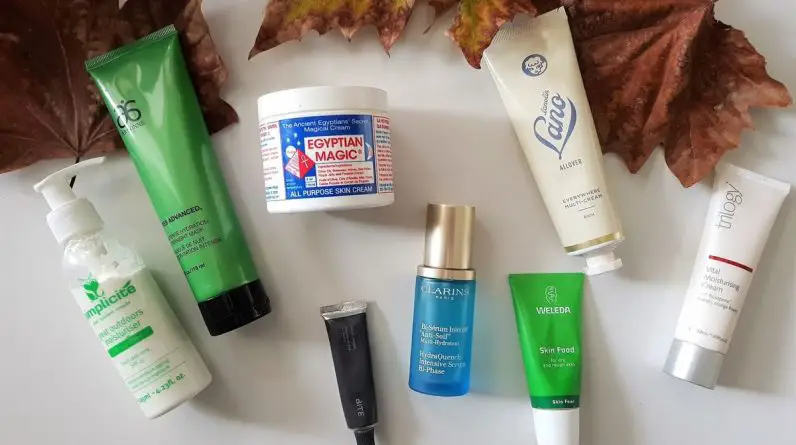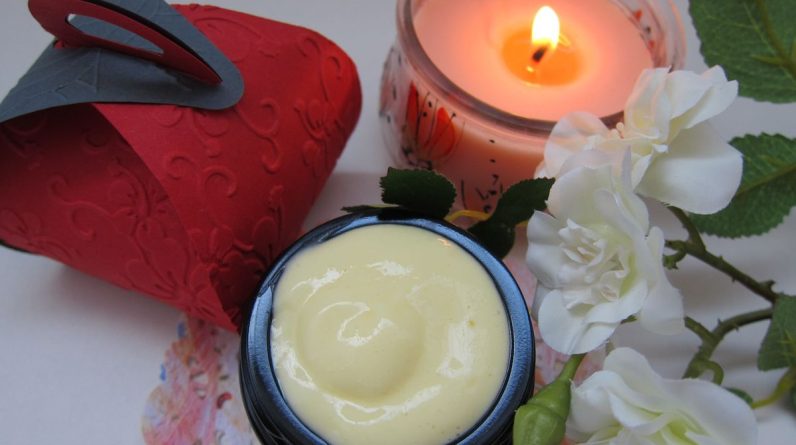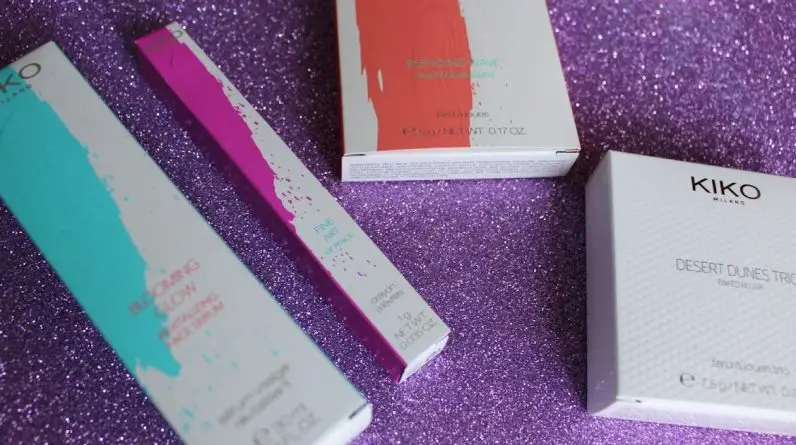Achieving radiant skin is an art that requires not just the right products, but also the correct order of application. Layering skincare products is a vital step in any beauty routine, as it ensures that each product is absorbed effectively and works in harmony with others. This guide will delve into the nuances of skincare layering, offering tips and insights to help you craft a personalized regimen that leaves your skin glowing. From understanding the importance of the layering process to adjusting your routine with the seasons, we’ve got you covered with everything you need to know about creating the ultimate skincare ritual for a luminous complexion.
Contents
- 1 Understanding the Importance of Skincare Layering
- 2 Crafting Your Personalized Skincare Routine
- 3 In-Depth Guide to Skincare Products and Their Order
- 4 Advanced Skincare Strategies for Enhanced Results
- 5 Maintaining Radiant Skin Through Seasonal Changes
- 6 Conclusion
- 7 Frequently Asked Questions
- 7.1 Why is the correct order of layering skincare products important?
- 7.2 How do I determine the best skincare routine for my skin type?
- 7.3 What is the basic order for layering skincare products?
- 7.4 Can I use the same skincare routine in the morning and at night?
- 7.5 How should I adjust my skincare routine with seasonal changes?
- 7.6 What are some common layering mistakes and how can I avoid them?
Key Takeaways
- Understanding the correct order of skincare product application is crucial for maximizing the effectiveness of each ingredient.
- Determining your skin type is the first step in crafting a personalized skincare routine that addresses your specific needs.
- The basic skincare layering sequence starts with the lightest products and ends with the heaviest, ensuring optimal absorption.
- Incorporating seasonal adjustments and targeted treatments can enhance the results and maintain skin health throughout the year.
- Active ingredients and advanced skincare strategies, when used correctly, can significantly improve skin texture and radiance.
Understanding the Importance of Skincare Layering

Maximizing Product Effectiveness Through Proper Application
To ensure your skincare products work harmoniously for the best results, proper application is key. A fundamental principle is to apply products from the lightest to the heaviest consistency. This approach allows each layer to be absorbed without hindrance, maximizing the efficacy of the active ingredients.
By starting with lighter formulas like cleansers and moving to heavier ones like creams, you create an optimal environment for your skin to receive the full benefits of each product.
Following this guideline, a typical routine might look like this:
- Begin with a gentle cleanser to remove impurities.
- Apply toner to balance the skin’s pH and enhance absorption.
- Use serums or essences, which are packed with potent ingredients.
- Seal in moisture with a heavier cream or oil.
Remember, oil-based products can penetrate water-based layers, but not vice versa. Paying attention to the composition of your products is crucial for achieving a radiant complexion.
The Impact of Order in Your Skincare Routine
The sequence in which you apply your skincare products is pivotal to the health and beauty of your skin. The order of your skincare routine can significantly influence the effectiveness of each product. For instance, water-based products should be applied before oil-based ones to ensure proper absorption.
Layering is not just about what products you use, but also about how you use them. Applying products out of order can lead to reduced efficacy or even cause adverse reactions. Below is a simple list to help you remember the basic order of application:
- Cleanser
- Toner
- Serum
- Moisturizer
- Sunscreen
By following this sequence, you’re setting the stage for optimal absorption and function of your skincare products. It’s essential to give each product time to absorb before moving on to the next step. This patience can prevent the pilling that sometimes occurs when products are not given enough time to set.
Common Layering Mistakes and How to Avoid Them
Layering skincare products in the correct order is crucial for achieving the best results. Applying products out of sequence can hinder their effectiveness, leading to frustration and wasted effort. For instance, a common mistake is using a serum after applying a thick moisturizer, which prevents the serum from penetrating the skin. To avoid such errors, always start with the lightest consistency and move to the heaviest.
When layering products, think of your skin as a sponge that needs to absorb a variety of nutrients. Each product should complement the other, rather than create a barrier that prevents absorption.
Here’s a simple guideline to help you remember the right order:
- Cleanse your skin to remove impurities.
- Apply toners or essences to prepare the skin.
- Use serums and treatments to target specific concerns.
- Seal in the moisture with a cream or oil.
- Always finish with sunscreen during the day.
By following these steps, you can ensure that each product has the opportunity to work effectively, giving you the radiant skin you’re striving for.
Crafting Your Personalized Skincare Routine

Determining Your Skin Type and Needs
Before diving into the vast sea of skincare products, it’s crucial to anchor your routine in a clear understanding of your skin type. Identifying whether your skin is oily, dry, combination, or sensitive is the first step towards selecting products that will work in harmony with your skin’s natural characteristics.
To determine your skin type, observe how your skin feels after cleansing when it’s free of any products. Here’s a simple guide:
- Oily skin: Looks shiny and may feel greasy
- Dry skin: Feels tight and may have flaky areas
- Combination skin: Oily in the T-zone (forehead, nose, chin) and dry elsewhere
- Sensitive skin: May sting, burn, or itch after product use
Once you’ve pinpointed your skin type, consider your skin’s needs. Are you looking to address acne, wrinkles, hyperpigmentation, or dehydration? Your skin’s needs will guide you in choosing the right products and ingredients. For instance, hyaluronic acid is a hydrating powerhouse for dry skin, while salicylic acid is a go-to for acne-prone skin.
It’s essential to listen to your skin and adjust your routine as needed. What works for your skin today may not be the perfect fit tomorrow, as your skin’s needs can change with age, diet, and environmental factors.
The Basic Steps of Skincare Layering
Understanding the sequence of skincare products is crucial for enhancing their benefits and achieving a radiant complexion. Start with the thinnest consistency and progress to the thickest, ensuring that each product can be fully absorbed without the barrier of a heavier texture.
- Step 1: Begin with a cleanser to remove impurities and prepare your skin for subsequent products.
- Step 2: Apply toner to balance the skin’s pH and refine pores.
- Step 3: Use serums or treatments targeting specific skin concerns.
- Step 4: Lock in moisture with a cream or lotion.
- Step 5: Seal everything with a facial oil if needed.
It’s essential to allow each layer to absorb before applying the next. This patience pays off by maximizing the effectiveness of your skincare regimen.
Remember, the goal is not to overload the skin but to provide it with the necessary ingredients in the correct order. By following these steps, you’re setting the stage for a healthy, glowing complexion.
Customizing Your Routine for Morning and Night
Understanding that your skin’s needs differ from morning to night is crucial for an effective skincare routine. Morning skincare aims to protect your skin from the environmental stressors you’ll face throughout the day. It’s about preparing and shielding your skin, with a focus on hydration and sun protection.
In contrast, your nighttime routine is all about repair and rejuvenation. This is the time to use products that support skin recovery from daily stress, such as richer moisturizers and targeted treatments. It’s also the perfect opportunity to use products with active ingredients that may be too sensitive for daylight exposure, like retinoids.
The key is to listen to your skin and adjust your products accordingly. Not every product is meant for use at both times of the day.
Here’s a simple breakdown to help you differentiate your routines:
-
Morning:
- Cleanser
- Hydrating Toner
- Antioxidant Serum
- Moisturizer
- Sunscreen (SPF 30 or higher)
-
Night:
- Makeup Remover/Cleansing Balm
- Cleanser
- Hydrating Toner
- Treatment Serums
- Eye Cream
- Night Cream/Oil
Remember, while some products like a hydrating toner can be used both morning and night, others should be reserved for when they can best support your skin’s natural processes.
In-Depth Guide to Skincare Products and Their Order

Cleansers and Toners: The Foundation of Layering
Starting your skincare routine with the right cleanser sets the stage for the rest of your products. Cleansers are designed to remove impurities and prepare your skin for the subsequent layers of skincare. After cleansing, a hydrating toner should be applied. It acts as a primer, enhancing the absorption of serums and moisturizers that follow.
A toner’s ability to provide a base layer of hydration is crucial for maximizing the effectiveness of your entire routine.
Toners also play a significant role in addressing common skin concerns. They can help to reduce redness and inflammation, creating a more even skin tone. For those with dry or sensitive skin, a hydrating toner replenishes lost moisture, essential for maintaining a healthy skin barrier.
Here’s a simple guide on how to incorporate toners into your routine:
- Cleanse your face thoroughly.
- Apply toner while the skin is still damp to lock in moisture.
- Wait about 60 seconds before applying the next product, to allow the toner to fully absorb.
- Use toner both in the morning and evening for optimal hydration and preparation for other skincare products.
Serums, Essences, and Ampoules: Potent Treatments
Serums, essences, and ampoules are the powerhouses of skincare, delivering a high concentration of active ingredients to the skin. These potent treatments are designed to target specific skin concerns, ranging from hydration to anti-aging, and should be applied after cleansing and toning but before moisturizers and oils.
When layering multiple serums, it’s crucial to follow the thin-to-thick rule. Start with water-based serums and progress to more viscous, oil-based formulas. This ensures optimal absorption and effectiveness of the products.
To maximize the benefits of serums, ensure your skin is primed with a hydrating toner. This creates a receptive base that enhances the penetration of the serums’ active ingredients.
Here are some recommended serums for different skin needs:
- Smoothing: LANCÔME CLARIFIQUE PRO-SOLUTION FACE SERUM
- Hydrating: VICHY MINERAL 89 HYALURONIC ACID FACE SERUM
Consistency is key in skincare, and incorporating these treatments into your daily routine can significantly improve your skin’s health and appearance.
Moisturizers and Oils: Sealing in the Benefits
After layering various skincare products, moisturizers and oils play a crucial role in sealing in the benefits. These occlusive agents ensure that the hydration and active ingredients from previous steps are locked in, preventing them from evaporating too quickly. Dr. Idriss highlights that while oils don’t moisturize on their own, they boost the effectiveness of your routine when applied over other products, leaving skin softer and smoother.
Moisturizers should be applied while the skin is still damp to maximize hydration. This technique helps to prevent transepidermal water loss and enhances the skin’s moisture retention.
Incorporating a facial oil as the final step is essential, especially if you’ve used a moisturizer. The combination of hydration from the moisturizer and the retention capabilities of the oil is key for maintaining well-hydrated skin. Remember to use occlusive ingredients like beeswax, argan oil, or jojoba oil last, as they create a barrier that nothing else can penetrate.
- Use Moisturizer While Your Skin Is Still Damp
- Add a Sheet Mask Once a Week
By following these steps and understanding the role of occlusives and humectants like hyaluronic acid and glycerin, you can ensure that your skin remains hydrated and nourished throughout your skincare routine.
Sun Protection: The Non-Negotiable Final Layer
Sunscreen is the shield of your skincare regimen, providing essential protection against the sun’s harmful rays. Always apply a broad-spectrum sunscreen with at least SPF 30 as the final step in your morning routine. Unlike other skincare products, sunscreen is designed to sit on the surface of your skin, forming a barrier against UV radiation.
Sunscreen is not just about preventing sunburn; it’s a critical measure to reduce the risk of skin cancer and prevent premature aging. For optimal results, choose a sunscreen separate from your moisturizer, as combination products may not offer the same level of hydration or protection.
Consistent use of sunscreen can prevent the formation of abnormal collagen and elastin, keeping your skin looking youthful and healthy.
Here’s a quick checklist for your morning layering routine:
- Cleanser
- Toner
- Serum/Essence
- Moisturizer
- Sunscreen
At night, you can skip the sunscreen but never compromise on the rest of your routine. Ensuring that your skin is well-nourished and protected during the day will maintain its radiance and health.
Advanced Skincare Strategies for Enhanced Results
Incorporating Exfoliants and Masks into Your Routine
Exfoliants and masks are pivotal for addressing specific skin concerns and enhancing the overall effectiveness of your skincare routine. Exfoliation should be done with caution; over-exfoliating can lead to irritation and compromise your skin’s barrier. Aim to exfoliate 1-2 times per week, depending on your skin’s sensitivity and the product’s strength.
Exfoliants come in various forms, such as scrubs, enzymes, and acids. It’s essential to choose one that aligns with your skin type and concerns. After exfoliating, applying a mask can help to soothe and hydrate the skin, or address issues like oiliness or dullness. Here’s a simple guide to integrating these products into your routine:
- Cleanse your skin to ensure it’s free of impurities.
- Apply your chosen exfoliant, following the product’s instructions.
- Rinse or remove the exfoliant as directed.
- Apply a mask suited to your skin’s needs, leaving it on for the recommended time.
- Rinse or peel off the mask, then proceed with your regular skincare products.
When incorporating new treatments like exfoliants and masks, always patch test first and introduce them gradually to monitor your skin’s response. This approach helps to minimize potential adverse reactions and allows your skin to adjust.
The Role of Targeted Treatments for Specific Concerns
Targeted treatments, such as retinol for anti-aging or benzoyl peroxide for acne, play a crucial role in addressing specific skin concerns. Apply these treatments directly after cleansing to ensure maximum absorption and effectiveness. It’s important to allow your skin to dry completely before application to minimize irritation.
When incorporating spot treatments into your routine, timing is key. For instance, spot treatments for acne or dark spots are more effective when used at night, as the skin’s repair processes are most active. However, if your evening routine already includes potent actives like acids or retinoids, consider using spot treatments in the morning to avoid overwhelming your skin.
To optimize the benefits of targeted treatments, apply a thin layer over the affected area and wait for it to dry before proceeding with the rest of your skincare. This prevents the treatment from spreading and ensures focused action where it’s needed most.
Here are some spot treatments that are highly recommended:
- Dark spots: Kojic acid, Niacinamide
- Pimples: Benzoyl Peroxide, Salicylic Acid
Remember to listen to your skin and adjust the frequency of use based on its response to avoid over-exfoliation and maintain a healthy skin barrier.
Understanding and Utilizing Active Ingredients
Active ingredients are the backbone of any effective skincare routine, targeting specific skin concerns with precision. When incorporating active ingredients like retinol or hyaluronic acid, timing and sequence are crucial. After cleansing, apply treatments such as retinol or spot treatments for breakouts, ensuring the skin is completely dry to minimize irritation.
Hyaluronic acid, a hydrating powerhouse, should follow after any targeted treatments. It acts as a primer, enhancing the absorption and efficacy of subsequent products like serums and moisturizers. Remember to adhere to the lightest to heaviest consistency rule when layering multiple serums.
To maximize the benefits of active ingredients, allow a waiting period of at least 20 minutes after cleansing before application. This simple step can significantly reduce the risk of dryness and irritation, leading to a more comfortable and effective skincare experience.
Understanding the role of each active ingredient in your routine is essential for achieving optimal skin health. Here’s a quick reference list of common actives and their primary functions:
- Retinol: Anti-aging, improves skin texture
- Benzoyl Peroxide: Acne treatment, antibacterial
- Hyaluronic Acid: Hydration, plumping
- Vitamin C: Brightening, antioxidant protection
- Niacinamide: Reduces inflammation, evens skin tone
Maintaining Radiant Skin Through Seasonal Changes

Adjusting Your Skincare with the Seasons
As the seasons change, so should your skincare routine. Winter demands more hydration, while summer calls for lighter formulas and increased sun protection. Transitioning between products can help your skin adapt to varying environmental conditions.
Hydration is key in colder months, with heavier moisturizers and hydrating serums being essential. Conversely, in the heat of summer, gel-based moisturizers and mattifying sunscreens can help manage excess oil and shine.
It’s crucial to listen to your skin’s needs and adjust your routine accordingly. This might mean incorporating richer products as the temperature drops or opting for more robust sun protection as the days grow longer.
Here’s a simple seasonal skincare switch-up guide:
- Spring: Introduce antioxidants to repair winter damage.
- Summer: Focus on sun protection and oil control.
- Fall: Start adding layers of moisture to prepare for cooler weather.
- Winter: Emphasize deep hydration and barrier repair.
Protecting Your Skin from Environmental Stressors
Environmental stressors like UV light and pollution are relentless in their assault on your skin, leading to free radical damage and premature aging. Incorporating antioxidants into your skincare routine is essential for neutralizing these harmful effects. Antioxidants, found in products such as hydrating toners, not only defend against environmental damage but also soothe the skin, reducing inflammation and redness.
Antioxidants are your allies in the fight for a balanced and radiant complexion. They are particularly effective when combined with a daily SPF, as UV protection is critical for all skin types. For those with dry skin, a moisturizer with SPF can provide the necessary hydration while shielding from the sun’s rays.
Consistent use of a gentle cleanser, a fragrance-free moisturizer, and a sunscreen with at least SPF 30 is the trifecta of skin defense. This simple yet powerful combination can help maintain your skin’s health and vitality through the changing seasons.
Here is a quick reference for the three essential products to include in your routine:
- Cleanser: Opt for a gentle, sulfate-free option.
- Moisturizer: Choose a simple, fragrance-free formula for twice-daily use.
- Sunscreen: Select a mineral- or chemical-based sunscreen with an SPF of 30 or higher.
Hydration Techniques for Year-Round Radiance
Maintaining a radiant complexion involves consistent hydration, regardless of the season. Hydration is the cornerstone of a luminous skin, and it’s crucial to adapt your hydration techniques to keep up with the changing needs of your skin throughout the year.
Hydrating toners play a pivotal role in this process, offering a quick and effective way to deliver moisture to the skin’s surface. For better absorption, apply the toner to slightly damp skin and gently pat it in until fully absorbed. This simple step can significantly enhance the effectiveness of your skincare products.
- In the morning, use a hydrating toner to refresh and prepare your skin for the day ahead.
- In the evening, it helps remove impurities and soothe your skin, setting the stage for nighttime products.
When selecting a hydrating toner, look for key ingredients like yeast-derived mineral complexes and tamarind seed, which provide essential nutrients and improve skin elasticity and hydration.
Finally, remember to layer your skincare correctly. After using a hydrating toner, follow up with serums rich in hyaluronic acid and a moisturizer to seal in the moisture. Avoid using drying ingredients like retinoids if your skin is extremely dry, and instead, reach for products that support your skin’s hydration levels.
As the seasons shift, so should your skincare routine. Visit our website to discover expert tips and products that will help you maintain a radiant complexion all year round. Whether you’re combating dry winter air or protecting your skin from the summer sun, we have everything you need to adapt and thrive. Don’t let the weather dictate your skin’s health—take control and keep your glow no matter the season. Click here for our exclusive guide on ‘3 Essential Skincare Tips for Healthy, Radiant Skin‘ and elevate your beauty regimen today!
Conclusion
Mastering the art of skincare layering is akin to becoming a maestro of your own skin’s symphony. By understanding the importance of the correct order and method, you can enhance the effectiveness of each product, allowing your skin to reap the maximum benefits. Remember, the lightest formulas should be applied first, paving the way for heavier creams and oils to lock in the goodness. Whether you’re a minimalist or a skincare enthusiast with an extensive routine, the key is consistency and attention to detail. As you integrate these tips into your daily regimen, you’ll notice a more radiant, healthy complexion that truly glows. Embrace the journey to your best skin, and let the layers of your skincare routine build the foundation for lasting beauty.
Frequently Asked Questions
Why is the correct order of layering skincare products important?
Layering skincare products in the correct order maximizes the effectiveness of each ingredient. The right sequence ensures that products penetrate properly and deliver the intended benefits without negating each other.
How do I determine the best skincare routine for my skin type?
To determine the best skincare routine for your skin type, assess whether your skin is oily, dry, sensitive, or combination. Then, select products formulated for your specific needs and follow a layering order that starts with the lightest product and ends with the heaviest.
What is the basic order for layering skincare products?
The basic order for layering skincare products is to start with the thinnest, most watery formulas such as cleansers and toners, followed by serums and essences, then thicker treatments like moisturizers and oils, and always finish with sun protection during the day.
Can I use the same skincare routine in the morning and at night?
While some products can be used both morning and night, it’s best to customize your routine for each. In the morning, focus on protection with antioxidants and sunscreen, and at night, emphasize repair with active ingredients like retinoids and hydrating agents.
How should I adjust my skincare routine with seasonal changes?
Adjust your skincare routine with seasonal changes by incorporating more hydrating products in the winter and lighter, more breathable formulas in the summer. Always ensure you’re using adequate sun protection regardless of the season.
What are some common layering mistakes and how can I avoid them?
Common layering mistakes include using products out of order, which can prevent proper absorption, and combining incompatible ingredients that can irritate the skin. Avoid these mistakes by following a structured routine and understanding how different ingredients interact.







